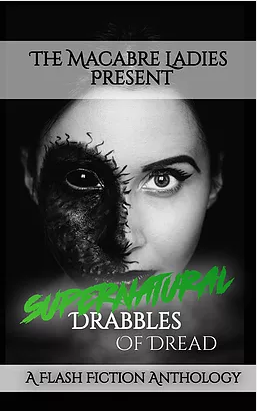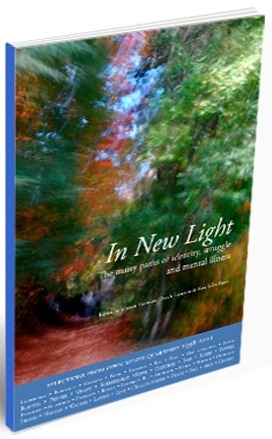Without much ado, I present to you the kernel from whence came the Apocalypse Diet. From 2002.

Poverty means crimping corners on food. Creative Commons: psd Flickr
Forced into circumstances beyond her control, mild-mannered copy editor, Colleen Anderson seeks a new way to survive and pay the dreaded ubiquitous tax man. Yep, that’s me, though not so mild-mannered. The working poor, freelancer who’s just gone through the depression diet, good for a few pounds. But now, having lost money for the first time in my freelance business of copy editing, having paid tax on the proportion where I worked proofing exciting car ads, having earned $10,000 less than the year before, statistically putting me in the range of poverty level income, I find that I owe $1000 in taxes.
I’d borrow from my brother but I just did that to buy a car as mine was failing badly. I’d get a loan but I don’t make enough per month to pay on the loan. I’d cut back on all those frivolities but I already have. All I can do is cut back on the necessities. I still have to pay rent, hydro, phone, car insurance, RRSP loan, creditline payment and gas. I still have to buy toilet paper and feed the cat. My brother’s going to have to wait for repayment. It looks like I will cut back on food.
After all, I wanted to lose thirty pounds anyway and my place is stocked with the usual. I should be able to get by for three months without buying food and stash $20/week (more than I was spending on food anyway) to give to the tax demons. That leaves me $30/week for incidentals and hopefully I’ll make enough to cover the bills.
DAY 1
Brought one of my frozen soups to work with two frozen buns. Didn’t eat it for lunch since I work twelve hours. I’ll save it for later when everyone’s ordering the weekly sushi at work. No more weekly wonton soup for me. Okay I’ve succumbed to buying a chocolate bar. Damn sweet tooth, it may break me yet. It’s nearly as bad as being a cigarette smoker, especially when you crave the good stuff. And I shouldn’t be eating cheap chocolate bars anyway. Too much dairy and I’m allergic to it.
Eat my thin veggie soup with the two buns for dinner, steal some sunflower seeds from the guys at work. When I get home, I go into the ohmigawd I’m limited on food thing and eat the last of my home-baked chocolate chip cookies as I fret over my taxes. That’s 6 small ones and a handful of slightly stale taco chips with the last of the chili pepper dip from my party a couple of weeks ago. I boil up some Asian style noodles for tomorrow and hit the sack.
As I lay there in bed I realize I better plan what I eat together, otherwise it’s going to get really weird when I’m eating sardines and jam. So, remember, use the crackers with the things you don’t like to eat by themselves. The frozen soups will last and be okay without any carbos. Maybe I’ll do protein one day, carbos another days, sweet jams another. I’m sure my doctor would kill me if she found out but I have to pay the damn taxes.
DAY 2

Chocolate: still my bane after all these years. Creative Commons: Wikipedia
Mixed the noodles with the last of the yogurt dill dip from my party, some sundried tomatoes steeped in oil, and pine nuts. That’s almost gourmet but how long will it last? It actually tastes good too. I can’t walk down to the store for a bag of corn chips anymore when I forget my lunch.
On the way home I succumb again to the evil sweet tooth. Maybe the tax man should team up with chocolate. They’d be unconquerable, taxing teeth, thighs and bank accounts equally. I stop at a chocolate factory and buy a bag of seconds using the debit card. When I get home, I eat half that bag and take a nap, only to wake to a horrible stomach ache. Too much dairy and I’m suffering for my sins. Well, that should get better as there’s nothing dairy left in the house. It’s going to get interesting though, when I’m down to nothing but a cupboard full of booze and a bunch of jam.
I set aside $20 for taxes and used the other $30 in one swell foop. That’s $25 for cat food since he was down to crumbs and $5 for toilet paper. I now have $2 and change in my purse till next week. And what money’s in the bank has to pay the bills and I probably will be short on rent.
I wonder if it’s like this in countries under siege. First everyone eats the delectables, afraid they’ll spoil or someone else will get them, eating too much like two buns with soup instead of a quarter of a bun with a quarter cup of soup. Wished I had more flour stored up. Low on all the carbos like rice and pasta. Ate the last of the potatoes earlier this week. Thank god I don’t have to worry about a coffee habit on top of the damn chocolate. Withdrawal will start soon.
DAY 3
Four crackers before I left for work at noon. No visions of sugar plums yet and frankly, what is a sugar plum? Probably some sugary prune before chocolate was cheap. Nowadays it would be visions of candy, chocolate, chips and pop dancing across the rotting teeth of kids. I think I probably have a couple of really old prunes somewhere and I’m sure I’ll get to them at some point.
I was offered an apple chip (coated in caramel sugar) at work and I wanted to grab the whole bag. But do you think it might set up a bad working environment to tell your co-worker you thought he was giving you the rest of the bag? Probably. Good thing I haven’t been eating much for a while so the mild growling barely fazed me.
After all that talk/thought about sardines and jam I thought I better eat some while I still have the cracker. Sardines in mustard, sort of a pasty hardly mustard, goo. Slapped them on some crackers, barely noticed the little spines that I usually must remove, and chowed down. Usually sardines are okay for twice a year and I really don’t know why I keep buying them because they’re kind of sinister for fish. I mean, what other fish would lay itself down in a can with others of its ilk, side by side? At least salmon and tuna have the decency to be from one whole fish. I’m going to have to space out eating the other two cans. Bleah. And now a handful of getting-ever-stale taco chips, no dip, no guac. That’s my dinner.
Stopped by Dan & Nessa’s where they had leftover taco fixins’. I ate one and feel quite full now. Food saviors, gotta love ‘em.
DAY 4
Reprieve. Going to the US for the weekend. Since I have some US money set aside I’ll be able to buy some food. I don’t eat until we get over the border and into Bellingham at 2. I buy six dolmades (grape leaves stuffed with rice), and a bag of jalapeno potato chips, which I eat on the way. For later I buy a bottle of wine, cider, one lime, a bag of mixed nuts and four muffins to share, which are really cupcakes in drag, weighing a pound each. That comes to $30 US or $45 CDN. US food prices are very expensive.
The bag of chips is so big there’s no way I can eat them all but they and the dolmades do the trick. We drive and drive and drive, through traffic torture and heat and finally get in around 8:30. We set up the tent and I eat a banana and drink one cider. By the time we’re all done setting up it’s time for bed.
DAY 5
Mary brings me a bun with turkey in it sometime in the afternoon. Just turkey and dijonaise, no veggies. I ate a part of Pasha’s magic bar, chocolate and coconut and something else. Later on we have supper, honey garlic chicken and brown rice, with caesar salad. I know I nibbled on a few more of the chips throughout the day so I don’t feel hungry at all.
Evening is drink time, cider and wine and partying.
DAY 6
I wake up hungry but we have to attend meetings and then break down the tent. I eat a couple of chocolate chip cookies and half of the one-pound “muffin.” Back in camp we start breaking down the tent and nibbling grapes. I eat a few more of the ubiquitous jalapeno chips and drink a glass of wine from what wasn’t finished the night before. I pack the mixed nuts that I completely forgot about.
On the way home we stop at David & Jeff’s and they order Chinese food. Lots of food, I pig out and then feel uncomfortable. We drive on and around 11 we stop for some gas and I’m looking for pomegranate juice because I’ve discovered it goes very well with vanilla vodka. They don’t have any but I find margarine with almost no whey in it. Being allergic to dairy can even eliminate most margarines and I’ve been looking for months for the brand I had bought. I don’t use butter or margarine much at all but it’s good to have some on hand. And I buy a few chocolates for the road because I’m falling asleep. Not the best and there’s dairy in them but there are exceptions, even for bad chocolate.

Soup is a good way to fill up when poor. Creative Commons: foodgeeks.com
DAY 7
Monday, day off for Victoria day and it’s cold and blah and rainy. I wake up quite late and eat the rest of the chips and the chocolates throughout the day. That’s my meal until late at night when I finally do the finalized version of my taxes. Then I have a bowl of comfort soup, Lipton’s chicken noodle, the low salt one, which doesn’t have MSG like almost any other packaged soup, canned or dry. Why, I have no idea, but MSG gives me rashes on my face and I already overdid it with the chips.
I used the slow cooker today and made soup from a frozen chicken carcass, denuded of most meat until all that’s there would maybe make a sparrow. I put that in the pot with the last of the veggies in my place. That’s some slightly yellowing broccoli, about a half bunch of celery, some garlic, half a lemon and spices. Spices I have lots of. It cooks all night.
DAY 8
This morning I boiled up some alphabet noodles I forgot I had and added them to the soup. I took a big container and two buns with some margarine on them, to work. However, I didn’t eat them during the day because I knew I had a long night. I succumbed to a chocolate bar and took another to work tonight. That’s $1 I’ve spent on food.
When I did get around to eating my soup it was quite tasty. I put enough pepper and Ethiopian pepper in to make it spicy. Stole some sunflower seeds again from the guys and eventually ate the chocolate, Caramilk, which wasn’t very good. Bleah.
Got home thinking to have more soup but then thought to have another bun. They’re starting to get that freezer burn taste. However, I settled for eating too many of the mixed nuts. Now I feel a bit bloated and it’s off to bed.
DAY 9
I had a handful of nuts today at work. I knew a friend was coming over to cook dinner so I skipped taking some more of the soup. When I got home I was really hungry though so I ate a handful of crackers and then got a stomach ache.
Once my friend D comes over we make stir fry with basmati rice, turkey, carrots, peas, peppers & lots of wine. I eat well and D bought all the food or we would have had very slim pickins.
DAY 10
Thurs. leftover stir fry, two ciders at penis poetry (I might have been doing a reading of my “penis suite” poems about the penis or I might have been at some other show…I don’t remember).

Dieting can make you crave food even more. Creative Commons: Sashamd Flickr
DAY 11
Friday, writers meeting, last of leftover stir fry, then over to Mikey’s for Vlad’s thang, some wine, Korean pancakes, peanuts, a couple of chips.
DAY 12
Kathy in town, meet her for rally, get a teacher’s free bag lunch, eat half the sandwich with no cheese, veggies with peppers & mayo, bottle of orange juice, cookie. Pub for two drinks then to K’s hotel. We hang out with pita, olives, artichoke hearts, red pepper spread, crackers, grapes, wine, then to lounge for more wine and cider, caeser, dancing all paid on her budget.
DAY 13 Over to Gibson’s with Kathy and to Robert’s and Wilson’s Creeks to see friends. Just a couple of cookies at Ross & Nancy’s, holding babies, a glass of blackberry wine. Two pieces of pizza with cheese pulled off (mostly), back on ferry, stop to buy can o mushrooms and some M&Ms because I found a spare $5 in my jacket pocket.
DAY 14 Tuna & frozen pasta sauce with wheel pasta. Banana chips.
Friday DAY 15 (You can see I started to lose enthusiasm for writing about this diet.)
chili
Saturday DAY 16
Ate some banana chips then went to help John move, or more unpack. His mom was there unpacking and hard at it. Helped in the kitchen and the bathroom, then we all went for dinner. Said I wasn’t going to go cuz I was broke but John said he’d buy. We had Mongolian grill food and it was tasty. All you can eat. I wanted to have more than one bowl but I was just too full.
Sunday DAY 17
Slept far too late even for a slackass day. Ate some banana chips and then Dan ICQed me to come over for BBQ. Met with Sam for coffee. Bought a grapefruit juice which has used some hard-earned coin.
Went to the BBQ and brought my contribution which was absinthe (left by friends after a party). I’m getting used to the taste. Ate chips, salad and a hamburger, which my stomach rebelled against later. But then it might have been the four bucks I spent, two on a bag of chocolate chips that I can eat through the week and two on chocolate covered peanuts that I chowed down too fast and I think they contributed to the stomach ache though I gotta say beef and me don’t see hoof to eye. I also felt waaay too full after eating the nuts. Not a good thing before going to bed.
Monday DAY 18
Slept in this morning and had to rush. I left when I should have been at work but made it in 20 minutes. So I gathered my last pennies and bought a bag of corn chips and some chocolate buds. That was lunch, balanced and healthy.
Had to work on some stuff tonight with a friend so I didn’t eat till 11pm and then I had the ubiquitous soup I made two weeks ago. It doesn’t seem to have turned yet though my stomach ached a bit after two bowls full. I had a handful of pine nuts too.
Tuesday DAY 19
Today as always I splurge and buy a bag of chips and a chocolate bar that I really shouldn’t be eating. That’s a buck from the $49 I have this week, $20 which will be set aside for taxes. I forgot to bring lunch with me and ten hours to get through. Guess I’ll be stealing sunflower seeds again tonight.
Around this time I must have got more work and went off the taxation diet.










 some dark recess of my imagination I don’t have full conscious access to, I suppose.
some dark recess of my imagination I don’t have full conscious access to, I suppose. I’ve wanted to write about a drowned village for years. My late grandfather, Alfred Joanisse, grew up in le Chenail, a village by the Ottawa River that was submerged (relocated for the most part) when the government built the Carillon dam near Hawkesbury. I grew up hearing stories about the village – he even brought me to the remaining stretch of land on several occasions and I still visit when I can–and le Chenail has haunted my imaginative landscape ever since. I tried writing about it repeatedly, but the emotional core of the story eluded me. After grandpa passed I could never quite manage to write about him, or his village. It felt too real, too close. Eventually, I decided to try my hand at the story again (it’s been five years since his death). This time everything clicked. The village here isn’t exactly le Chenail, it’s a composite of that and some of the Lost Villages of the Saint Lawrence River. The people here too are composites, drawn up from family, friends, and some of the elderly I’ve done volunteer work with over the years. It might just be my favourite thing I’ve written so far.
I’ve wanted to write about a drowned village for years. My late grandfather, Alfred Joanisse, grew up in le Chenail, a village by the Ottawa River that was submerged (relocated for the most part) when the government built the Carillon dam near Hawkesbury. I grew up hearing stories about the village – he even brought me to the remaining stretch of land on several occasions and I still visit when I can–and le Chenail has haunted my imaginative landscape ever since. I tried writing about it repeatedly, but the emotional core of the story eluded me. After grandpa passed I could never quite manage to write about him, or his village. It felt too real, too close. Eventually, I decided to try my hand at the story again (it’s been five years since his death). This time everything clicked. The village here isn’t exactly le Chenail, it’s a composite of that and some of the Lost Villages of the Saint Lawrence River. The people here too are composites, drawn up from family, friends, and some of the elderly I’ve done volunteer work with over the years. It might just be my favourite thing I’ve written so far.













